Preparation for a show
The subject of preparation for a show was recently raised on the Worldvents discussion group. As I began to address it, I realized that my answer was becoming a candidate for a blog article. So here it is.
There are different approaches to the issues of how you prepare for a show and how you deal with your patrons before the show.
My preparation is probably less conventional than that for most vents because I combine comedy with music. I typically perform as a musician with a house band. The first set is music. The second set is comedy.
Setup
Setup is easy for the vent part. It has to be. I have several different instruments to unpack, tune, and put in place on the bandstand. That takes most of my setup time.
For vent, I have a rollaround case that Clinton Detweiler built to my specifications. It contains everything I need for the vent part of the show. Clinton did the case itself. I build inserts from thin plywood to hold my stuff in place.

The figures and other items travel in the case ready to be pulled out during a performance. They are held in place for traveling with Velcro straps, which I release before the show starts. The figures sit on small shelves in the case.
The case stays either onstage if there is room for it and elsewhere nearby if there is not. It holds three hard figures and the performance stand. (I rarely use props.) Setup involves finding a place for it, rolling it from the car into place, and removing and storing the lid. If the case has to be offstage or backstage, I roll it onstage at the beginning of the show, usually during intermission before the comedy set. If a bandstand has no room for the case at all, which often happens, I go to and from the case wherever it is between figures.
When I want to use a figure, I reach in from behind the case and pull the figure out and sit it on the stand. When I am finished with the figure, I put it back on its shelf.
My original design for the case made it just tall enough that it could be the performance stand, too. Because so many venues don't have room onstage for it to be next to me, I abandoned that idea and opted instead for the additional storage space I got by making it a little taller.
For shows that are comedy only and don't involve a house band and don't have house sound, I take my own sound system, which I set up before the party begins.
Mingling
As a musician, I cannot avoid it. It's a different dynamic than comedy. It involves taking breaks, going to the bar, talking to the patrons, selling CDs, etc. Those venues are usually saloons, the patrons are mostly strangers to one another, and I wear normal clothes to perform--nothing flashy to signal, "Clown!"--so I can blend in before showtime if there is no green room to hide out in.
For comedy only, I stay out of sight until I am announced. If it's a corporate group, I've already learned from the planner who I can mention during the show and what I need to know about them.
I don't call volunteers onstage, so that is not a concern.
For comedy and jazz club type shows, I just pick on people nearest to me with generic putdowns or flirtations from the dummy.
Dinner
If dinner is included, I ask to be served in the green room. If eating with the guests is unavoidable, I try to blend in and be nondescript. That's not always easy because in many situations they saw my promo picture and know that I am not one of their group. If they ask what I do, I just say, "I'm in the show." If they push it, I say, "It's a surprise."
Mental Preparation
I don't do anything to psych myself up. No meditation, yoga, or anything other-worldly like that. I try to completely forget about the show's content the day of the show from the time I get out of bed in the morning until I am announced onstage. If I don't know it by then, I never will.
Before going onstage, I take a peek at the audience. I pick out someone to play to, usually a pretty girl or an elderly person.
There are different approaches to the issues of how you prepare for a show and how you deal with your patrons before the show.
My preparation is probably less conventional than that for most vents because I combine comedy with music. I typically perform as a musician with a house band. The first set is music. The second set is comedy.
Setup
Setup is easy for the vent part. It has to be. I have several different instruments to unpack, tune, and put in place on the bandstand. That takes most of my setup time.
For vent, I have a rollaround case that Clinton Detweiler built to my specifications. It contains everything I need for the vent part of the show. Clinton did the case itself. I build inserts from thin plywood to hold my stuff in place.

The figures and other items travel in the case ready to be pulled out during a performance. They are held in place for traveling with Velcro straps, which I release before the show starts. The figures sit on small shelves in the case.
The case stays either onstage if there is room for it and elsewhere nearby if there is not. It holds three hard figures and the performance stand. (I rarely use props.) Setup involves finding a place for it, rolling it from the car into place, and removing and storing the lid. If the case has to be offstage or backstage, I roll it onstage at the beginning of the show, usually during intermission before the comedy set. If a bandstand has no room for the case at all, which often happens, I go to and from the case wherever it is between figures.
When I want to use a figure, I reach in from behind the case and pull the figure out and sit it on the stand. When I am finished with the figure, I put it back on its shelf.
My original design for the case made it just tall enough that it could be the performance stand, too. Because so many venues don't have room onstage for it to be next to me, I abandoned that idea and opted instead for the additional storage space I got by making it a little taller.
For shows that are comedy only and don't involve a house band and don't have house sound, I take my own sound system, which I set up before the party begins.
Mingling
As a musician, I cannot avoid it. It's a different dynamic than comedy. It involves taking breaks, going to the bar, talking to the patrons, selling CDs, etc. Those venues are usually saloons, the patrons are mostly strangers to one another, and I wear normal clothes to perform--nothing flashy to signal, "Clown!"--so I can blend in before showtime if there is no green room to hide out in.
For comedy only, I stay out of sight until I am announced. If it's a corporate group, I've already learned from the planner who I can mention during the show and what I need to know about them.
I don't call volunteers onstage, so that is not a concern.
For comedy and jazz club type shows, I just pick on people nearest to me with generic putdowns or flirtations from the dummy.
Dinner
If dinner is included, I ask to be served in the green room. If eating with the guests is unavoidable, I try to blend in and be nondescript. That's not always easy because in many situations they saw my promo picture and know that I am not one of their group. If they ask what I do, I just say, "I'm in the show." If they push it, I say, "It's a surprise."
Mental Preparation
I don't do anything to psych myself up. No meditation, yoga, or anything other-worldly like that. I try to completely forget about the show's content the day of the show from the time I get out of bed in the morning until I am announced onstage. If I don't know it by then, I never will.
Before going onstage, I take a peek at the audience. I pick out someone to play to, usually a pretty girl or an elderly person.



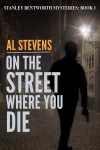
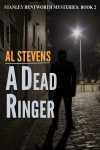
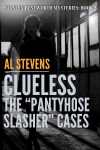
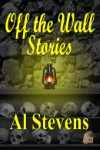
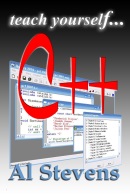


<< Home